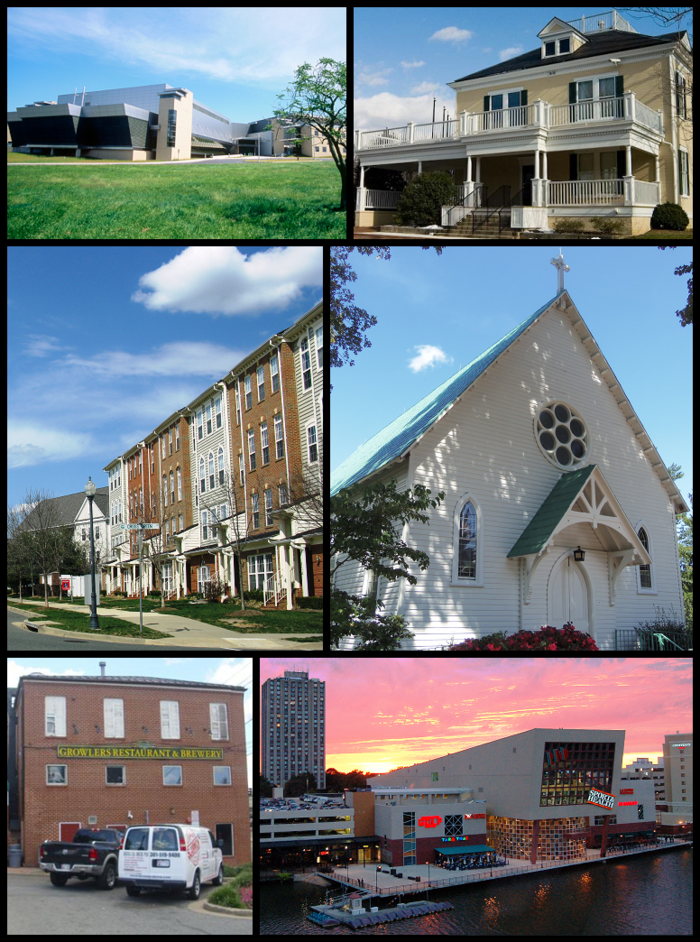Moving to Gaithersburg, Maryland
About Gaithersburg, Maryland

Gaithersburg ( GAY-thərz-burg) is a city in Montgomery County, Maryland, United States. At the time of the 2020 United States census, Gaithersburg had a population of 69,657, making it the third-largest incorporated city and the ninth-most populous community in the state. Gaithersburg is located to the northwest of Washington, D.C., and is considered a suburb and a primary city within the Washington metropolitan area. Gaithersburg was incorporated as a town in 1878 and as a city in 1968.
The National Institute of Standards and Technology (NIST) is headquartered in Gaithersburg directly west of I-270. Other major employers in the city include IBM, Lockheed Martin Information Systems and Global Services business area headquarters, AstraZeneca. Gaithersburg is also the location of the garrison of the United States Army Reserve Legal Command.
Gaithersburg is noted for its ethnic and economic diversity; it was ranked second for ethnic diversity among the 501 largest U.S. cities, and first among smaller U.S. cities, by WalletHub in 2021. In 2023, Wallethub announced that Gaithersburg was back in the number one spot for diversity in the U.S.
Gender
| Gender | Gaithersburg | Maryland | Country |
|---|---|---|---|
| Female | 51.5% | 51.5% | 50.8% |
| Male | 48.5% | 48.5% | 49.2% |
Gender
Household Income
| Income | Gaithersburg | Maryland | Country |
|---|---|---|---|
| Less than $10,000 | 4.7% | 4.6% | 5.8% |
| $10,000 to $14,999 | 1.9% | 2.6% | 4.1% |
| $15,000 to $24,999 | 5.6% | 5.6% | 8.5% |
| $25,000 to $34,999 | 4.7% | 6.1% | 8.6% |
| $35,000 to $49,999 | 8.3% | 9.3% | 12.0% |
| $50,000 to $74,999 | 15.7% | 15.2% | 17.2% |
| $75,000 to $99,999 | 12.8% | 13% | 12.8% |
| $100,000 to $149,999 | 19.5% | 19.3% | 15.6% |
| $150,000 to $199,999 | 11.7% | 10.8% | 7.1% |
| $200,000 or more | 15.1% | 13.4% | 8.3% |
Education
| Education | Gaithersburg | Maryland | Country |
|---|---|---|---|
| < 9th Grade | 7% | 3% | 5.0% |
| 9-12th Grade | 5% | 6% | 7.0% |
| High School or GED | 16% | 24% | 27.0% |
| Other College | 13% | 19% | 20.0% |
| Associate's Degree | 6% | 7% | 9% |
| Bachelor's Degree | 28% | 22% | 20.0% |
| Master's Degree | 17% | 13% | 9.0% |
| Professional Degree | 3% | 3% | 2.0% |
| Doctorate Degree | 5% | 3% | 1.0% |
Household Income
Education
Race / Ethnicity
| Ethnicity | Gaithersburg | Maryland | Country |
|---|---|---|---|
| White | 33.1% | 50.2% | 60.1% |
| African American | 17.1% | 29.4% | 12.2% |
| American Indian | 0.3% | 0.2% | 0.6% |
| Asian | 20.2% | 6.3% | 5.6% |
| Hawaiian | 0.1% | 0% | 0.2% |
| Other | 0.4% | 0.4% | 0.3% |
| Multiracial | 3.5% | 3.3% | 2.8% |
| Hispanic | 25.3% | 10.3% | 18.2% |
Race / Ethnicity
- ALABAMA
- ALASKA
- ARIZONA
- ARKANSAS
- CALIFORNIA
- COLORADO
- CONNECTICUT
- DELAWARE
- FLORIDA
- GEORGIA
- HAWAII
- IDAHO
- ILLINOIS
- INDIANA
- IOWA
- KANSAS
- KENTUCKY
- LOUISIANA
- MAINE
- MARYLAND
- MASSACHUSETTS
- MICHIGAN
- MINNESOTA
- MISSISSIPPI
- MISSOURI
- MONTANA
- NEBRASKA
- NEVADA
- NEW HAMPSHIRE
- NEW JERSEY
- NEW MEXICO
- NEW YORK
- NORTH CAROLINA
- NORTH DAKOTA
- OHIO
- OKLAHOMA
- OREGON
- PENNSYLVANIA
- RHODE ISLAND
- SOUTH CAROLINA
- SOUTH DAKOTA
- TENNESSEE
- TEXAS
- UTAH
- VERMONT
- VIRGINIA
- WASHINGTON
- WEST VIRGINIA
- WISCONSIN
- WYOMING
